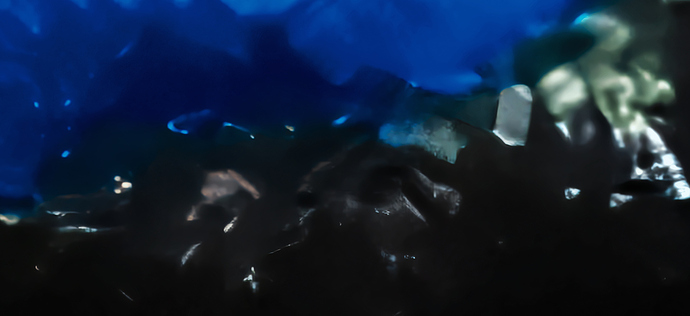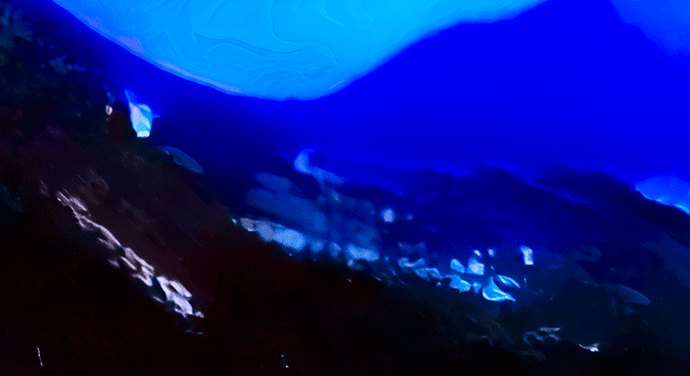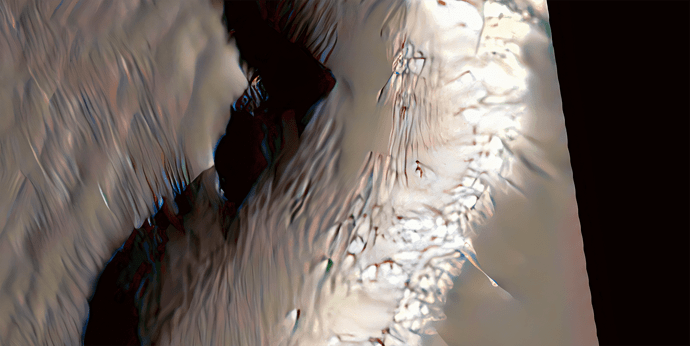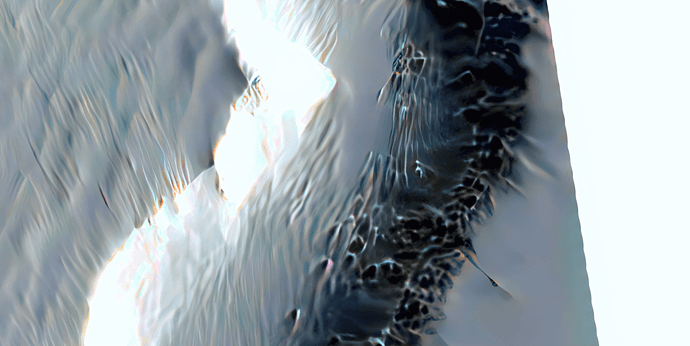@deandddd , the main reason for Martian surface being inhospitable to life is it's intense radioactivity , like that of Hiroshima/Nagasaki , shortly after they were nuked in 1945 . This is why it is believed that any meaningful chances of finding life on Mars would be in underground cavern systems :-
The radiation showstopper for Mars exploration
31/05/2019 12689 views 92 likes
ESA / Science & Exploration / Human and Robotic Exploration
An astronaut on a mission to Mars could receive radiation doses up to 700 times higher than on our planet – a major showstopper for the safe exploration of our Solar System. A team of European experts is working with ESA to protect the health of future crews on their way to the Moon and beyond.
Earth’s magnetic field and atmosphere protect us from the constant bombardment of galactic cosmic rays – energetic particles that travel at close to the speed of light and penetrate the human body.
Cosmic radiation could increase cancer risks during long duration missions. Damage to the human body extends to the brain, heart and the central nervous system and sets the stage for degenerative diseases. A higher percentage of early-onset cataracts have been reported in astronauts.
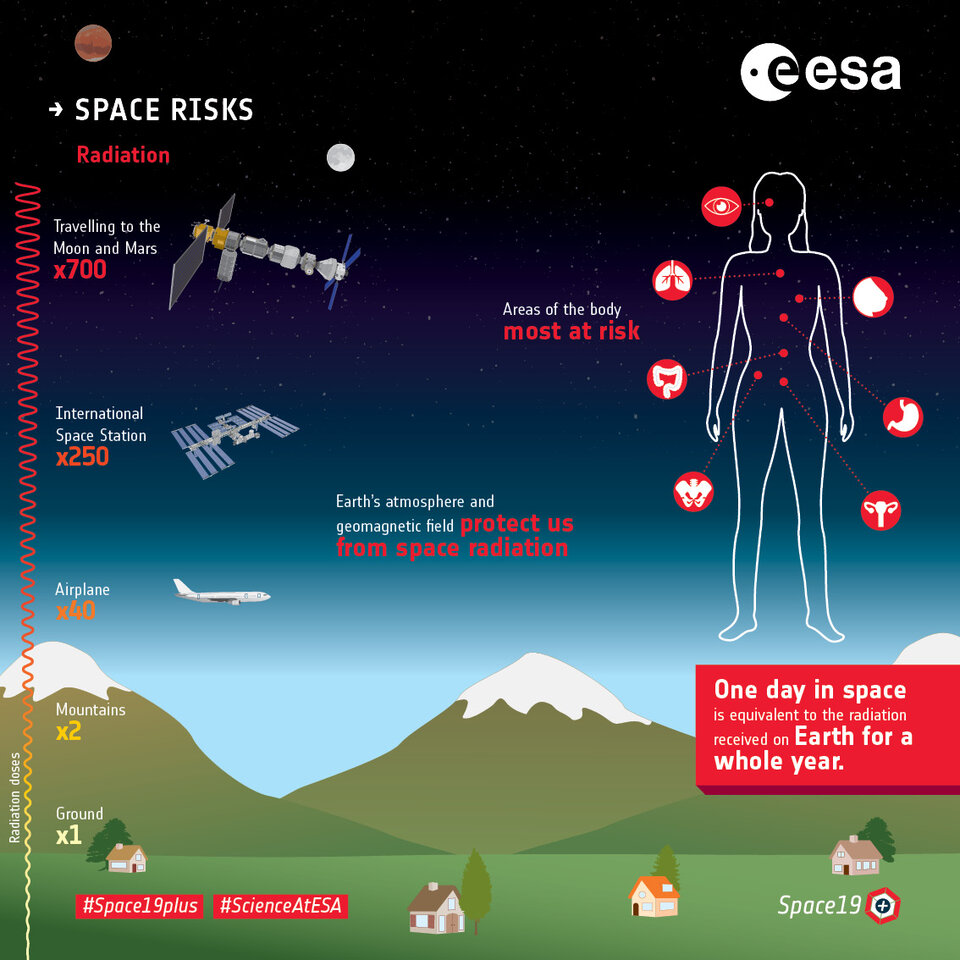
Space risks – Radiation
“One day in space is equivalent to the radiation received on Earth for a whole year,” explains physicist Marco Durante, who studies cosmic radiation on Earth.
Marco points out that most of the changes in the astronauts’ gene expression are believed to be a result of radiation exposure, according to the recent NASA’s Twins study. This research showed DNA damage in astronaut Scott Kelly compared to his identical twin and fellow astronaut Mark Kelly, who remained on Earth.
A second source of space radiation comes from unpredictable solar particle events that deliver high doses of radiation in a short period of time, leading to ‘radiation sickness’ unless protective measures are taken.
Europe’s radiation fight club
“The real problem is the large uncertainty surrounding the risks. We don’t understand space radiation very well and the long-lasting effects are unknown,” explains Marco who is also part of an ESA team formed to investigate radiation.
Since 2015, this forum of experts provides advice from areas such as space science, biology, epidemiology, medicine and physics to improve protection from space radiation.
“Space radiation research is an area that crosses the entire life and physical sciences area with important applications on Earth. Research in this area will remain of high priority for ESA,” says Jennifer Ngo-Anh, ESA’s team leader human research, biology and physical sciences.
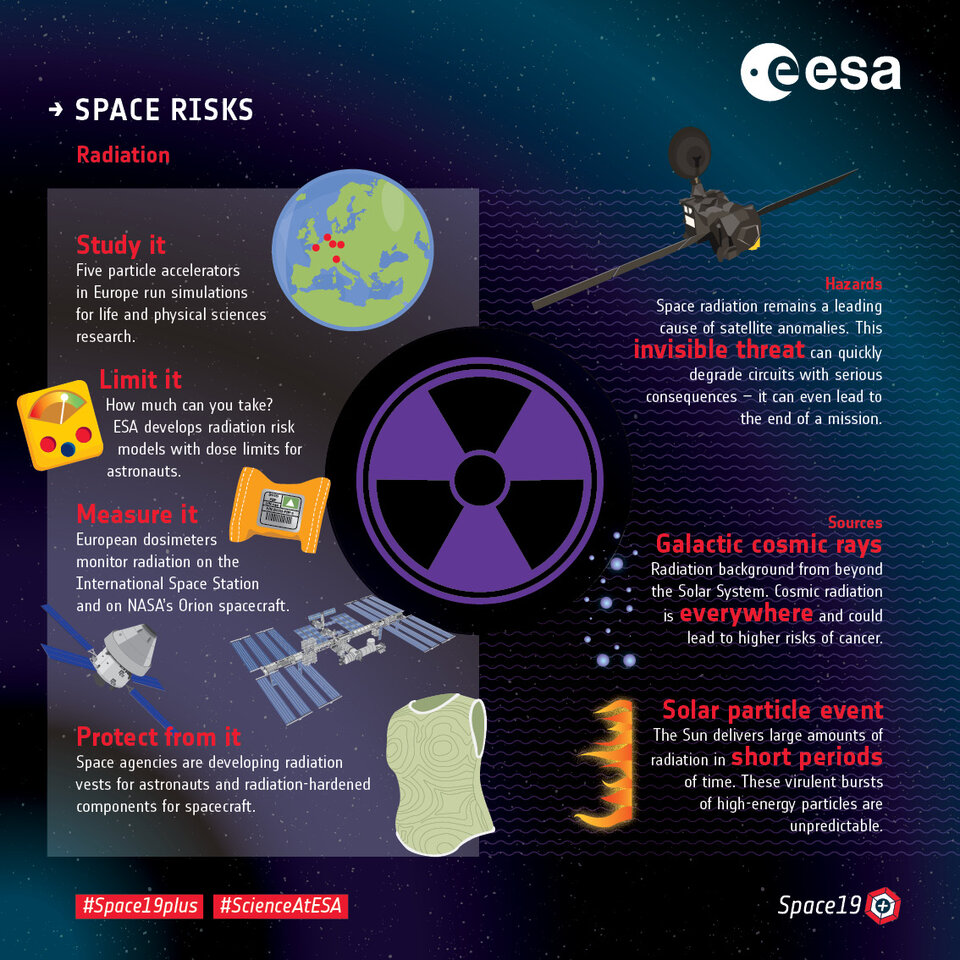
Space risks – Fighting radiation
While astronauts are not considered radiation workers in all countries, they are exposed to 200 times more radiation on the International Space Station than an airline pilot or a radiology nurse.
Radiation is in the Space Station’s spotlight every day. A console at NASA’s mission control in Houston, Texas, is constantly showing space weather information.
If a burst of space radiation is detected, teams on Earth can abort a spacewalk, instruct astronauts to move to more shielded areas and even change the altitude of the Station to minimise impact.
One of the main recommendations of the topical team is to develop a risk model with the radiation dose limits for crews travelling beyond the International Space Station.
ESA’s flight surgeon and radiologist Ulrich Straube believes that the model should “provide information on the risks that could cause cancer and non-cancer health issues for astronauts going to the Moon and Mars in agreement with all space agencies.”
Recent data from ExoMars Trace Gas Orbiter showed that on a six-month journey to the Red Planet an astronaut could be exposed to at least 60% of the total radiation dose limit recommended for their entire career.
“As it stands today, we can’t go to Mars due to radiation. It would be impossible to meet acceptable dose limits,” reminds Marco.
Measure to protect
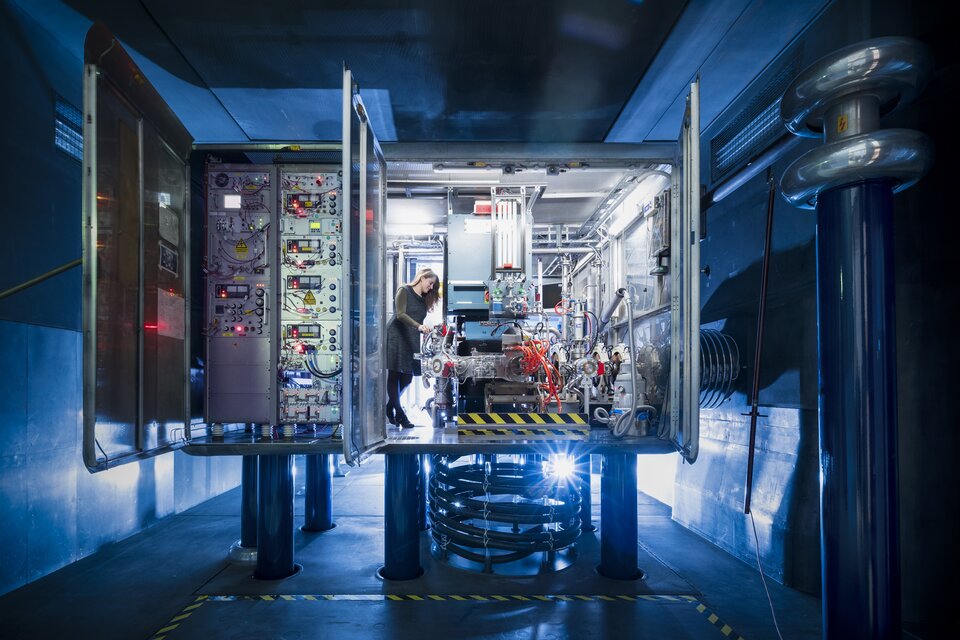
A particle accelerator to help make spaceflight safer
ESA has teamed up with five particle accelerators in Europe that can recreate cosmic radiation by ‘shooting’ atomic particles to speeds approaching the speed of light. Researchers have been bombarding biological cells and materials with radiation to understand how to best protect astronauts.
“The research is paying off. Lithium is standing out as a promising material for shielding in planetary missions,” says Marco.
ESA has been measuring the radiation dose on the International Space Station for seven years with passive radiation detectors in the DOSIS 3D experiment. ESA astronauts Andreas Mogensen and Thomas Pesquet wore a new mobile dosimeter during their missions that gave them a real-time snapshot of their exposure.
The same European team behind this research will provide radiation detectors to monitor the skin and organ doses of the two phantoms traveling to the Moon onboard NASA’s Orion spacecraft.
ESA has demonstrated expertise in studying Mars from orbit, now we are looking to secure a safe landing, to rove across the surface and to drill underground to search for evidence of life. Our orbiters are already in place to provide data relay services for surface missions. The next logical step is to bring samples back to Earth, to provide access to Mars for scientists globally, and to better prepare for future human exploration of the Red Planet. This week we’re highlighting ESA’s contribution to Mars exploration as we ramp up to the launch of our second ExoMars mission, and look beyond to completing a Mars Sample Return mission. Join the conversation online with the hashtag #ExploreFarther
**Also , just to get a sense of scale & proportion , only last month , a forest fire that brought Chernobyl's radiation levels to merely 16 times normal (Martian surface has 700 times) , got alarm bells ringing :-
Chernobyl radiation levels spiked 16 times above normal amount as forest fires rage across the deserted area
Paulina Cachero
Apr 6, 2020, 9:31 PM
A fire burns in the exclusion zone around the Chernobyl nuclear power plant
Yaroslav Yemelianenko/Reuters
-
With fires raging across Chernobyl, radiation levels have spiked 16 times above the normal amount in the uninhabited area.
- Firefighters in Ukraine have been battling two forest fires in an area near the abandoned nuclear plant around the deserted village of Vladimirovka.
- While the radiation levels have begun to jump in the area surrounding the fire, authorities said the change has not impacted the radiation levels of Ukraine's capital of Kiev or the surrounding suburbs.
-
Visit Insider's homepage for more stories.
Chernobyl has been largely quiet and desolate since the 1986 nuclear meltdown whose radioactive fallout left the town and surrounding abandoned. But after fires engulfed forests in the uninhabited Chernobyl exclusion zone, radiation levels in Chernobyl have begun spiking 16 times above normal levels and just below the maximum permissible amount, The Guardian reported.
"There is bad news — radiation is above normal in the center of the fire," Yegor Firsov, the head of Ukraine's ecological inspection service, posted on Facebook on Sunday with a video showing the spiking levels on a Geiger counter. "As you can see in the video, the readings of the device are 2.3, [when the norm] is 0.14. But this is only within the area of the fire outbreak."
According to the emergency service, the maximum allowable amount of natural background radiation is 0.5, but Firsov's Geiger counter measured nearly five times that.
A geiger counter measures a radiation level at a site of fire burning in the exclusion zone around the Chernobyl nuclear power plant
Yaroslav Yemelianenko/Reuters
The fires first broke out on Saturday afternoon, engulfing 50 acres near the deserted village of Vladimirovka, but firefighters continued to battle two blazes Monday morning, Ukrainian emergency services told CNN. The emergency services sent out 124 firefighters, two planes and a helicopter to battle the larger fires which spread to 250 acres while another 14 are battling a blaze engulfing 12 acres.
Despite the alarming peaks in radiation in the center of the fire outbreaks, the radiation levels do not appear to have had an effect on Ukraine's capital, Kiev, or the surrounding suburbs, according to a statement released by the Emergency Preparedness and Radiation Monitoring Department in Ukraine.
"It can be argued that as of 5:00 PM on April 5, a fire in the Exclusion Zone and unconditional (compulsory) eviction had no effect on the radiation situation in Kyiv and the suburbs," the statement read.
Vladimirovka and other villages surrounding the area were evacuated after the unprecedented 1986 nuclear meltdown exposed residents to dangerous levels of radiation. Since then, the 1,000-square-mile exclusion zone has been overtaken by nature where forest fires are common.
Firsov warned in his Facebook post against citizens regularly setting fire to grass during the spring and autumn seasons — a violation that only prompts a 175 UAH, or about 6 USD, penalty. Firsov called on the Ukraine parliament to "significantly raise penalties" or risk seeing more of dangerous wildfires in the Chernobyl area.
"The problem of setting fires to grass by careless citizens in spring and autumn has long been a very acute problem for us," Firsov wrote. "Every year we see the same picture -- fields, reeds, forests burn in all regions."
Regards








